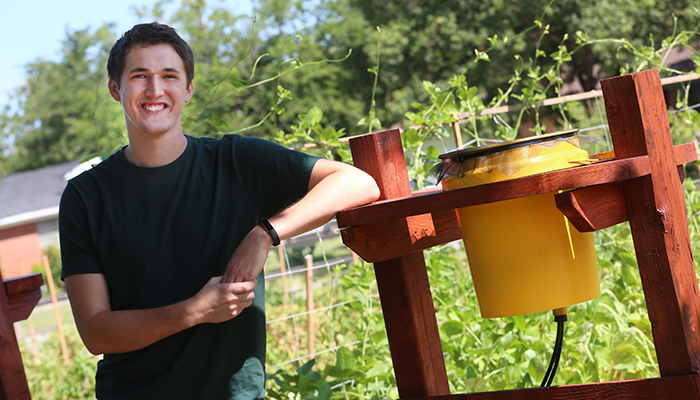Conference aims to help community gardeners
By Betsy Friauf
You might not know it from this spring’s North Texas deluges, but water is a big issue. Globally, according to the World Bank and World Health Organization, a billion people lack enough water for basic needs. Most of Texas is momentarily drought-free. But frequent record rainfall events drop too much water in the wrong places at the wrong times. We have too little capacity to store it for future dry spells.
But for many, the remedy can be constructed with simple items such as a 5-gallon bucket, scrap lumber, tubing and an old shirt. They’re the basic components of the “bucket drip irrigation system.” You can learn how to use it in your garden or urban farm to conserve water and effort. Jacob Fripp has taught hundreds of people, and he’ll give a demonstration at Dig Deep: a Conference for Growers July 16 at UNT Health Science Center.
With 1-in-6 Texans facing hunger every day, the Tarrant Area Food Bank is sponsoring the conference to equip new and experienced growers with strategies and resources to help them start or enhance their gardens and farms. The conference is made possible through the collaboration of the Food Bank and UNTHSC. Both organizations manage and support community garden projects in the DFW area.
“This conference goes beyond sharing knowledge and information with a group of like-minded people,” said Becca Smith, Community Garden Coordinator for the Food Bank. “We want to create an opportunity for growers in North Texas to expand the reach and impact of the positive work they do in our community.”
“Dig Deep:
|
Following the conference, attendees are invited to take a tour of the Health Science Center’s community garden located on campus.
“A key goal for our garden and this conference is promoting a healthier community,” said Sandy Bauman, Sustainability Coordinator for UNTHSC. “Through our university’s community garden, we are helping feed those in need, educating people on organic gardening, and encouraging environmental stewardship.” At least 25 percent of the produce grown in the center’s garden plots is donated to local food pantries, including one of the Food Bank’s partner hunger-relief agencies.







Social media